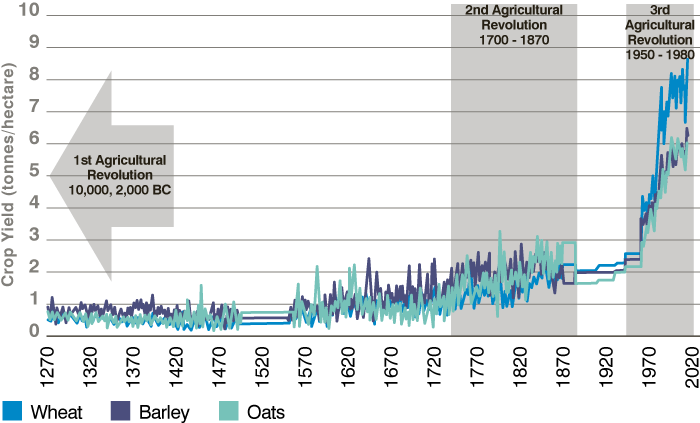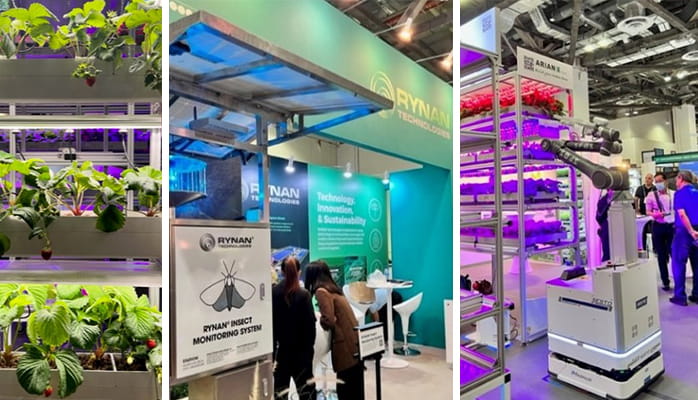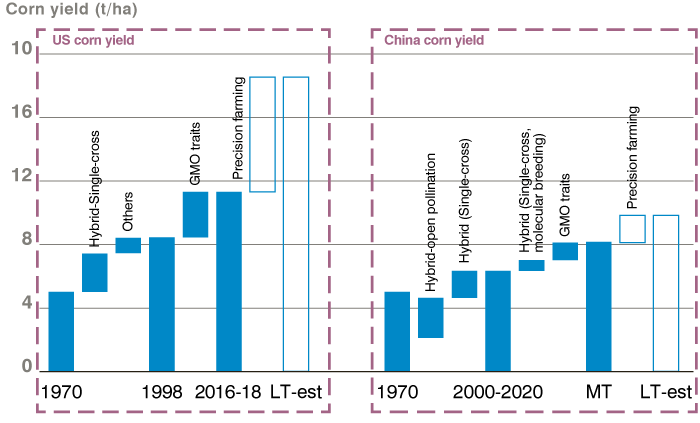The future of our food supply
10 March 2023
The challenge we face
According to the Food and Agriculture Organisation of the United Nations, over three billion people, the equivalent of 42% of the global population, could not afford a healthy diet in 2020. Given persistent levels of elevated inflation, we can only expect this number to increase in the short-term, yet we simultaneously observe record levels of waste, with 14% of food produced globally lost between harvest and retail.
Why does this matter?
In recent years, this challenge has been exacerbated by the two major drivers of food insecurity: conflict and climate change. Although 2022 was dominated by volatility across nearly all assets amid a backdrop of rising rates and protracted conflict between Russia and Ukraine, it is essential to maintain a longer-term view given the complexity and time lag of the agricultural supply chain. Energy costs, fertiliser supply and the knock-on impact on grain prices have been particularly prevalent in news flow. However, supply and demand imbalances had already emerged prior to the outbreak of the war in Ukraine due to export bans and production outages.
In the coming decades, as we approach peak population and the number of mouths the world must feed continues to grow, combined with the challenges of more temperamental climate patterns, how can these interconnected challenges be addressed and what role can investors play?
Figure 1: Agriculture through the ages

What is the opportunity from an investment perspective?
As with the majority of productivity gains, we believe the answer lies in technological innovation which has been rapidly disrupting the agricultural industry across various parts of the value chain following an era of mechanisation.
Having attended the latest Agri-Food Tech Expo in Singapore, we caught a glimpse into future technologies gaining traction in the market, ranging from larvae feed substitutes to industrial scale insect monitoring systems.
Figure 2: A glimpse into future technology at the Agri-Food Tech Expo in Singapore

The stark output gap between crops in China versus the US - where corn output per hectare is 40% less than the equivalent in the US, and it takes up to 25% more grain to produce 1kg of pork or chicken - highlights the need for a multipronged approach to improving agricultural efficiency. We believe this can be achieved via three key investment opportunities:
Firstly, we have observed an improvement in seed innovation resulting in greater yields and resilience. While this has been an ongoing development over the last few decades in the US, Argentina and Europe, China is currently progressing with first generation genetically modified (GM) seeds, estimated to improve yields by up to 10% for corn, reducing the use of pesticides and lowering mycotoxin levels in grain output. The seed market is heavily regulated and applying selectivity can offer a scalable solution to increasing food production to meet growing demand while dealing with climate risks such as intense heat, flooding or drought. From a sustainability perspective, GM crops come with conflicting trades offs between unintended contagion leading to biodiversity loss and a reduction in chemical run-off, which can have a positive impact on the surrounding environment.
Figure 3: US and China corn yields

Secondly, we see opportunity in precision agriculture, which involves extensive data collection and analysis to optimise the use of inputs such as seeds, nutrients and pesticides to automate decision making during the growing process via hardware and software. Farming machinery has evolved to now perform a range of roles from auto-steering to water management to multi-jet spraying of several agricultural inputs, which in combination currently make up 40% of production costs.
With the costs of processing power falling, the fundamentals of precision agriculture appear attractive following a return to farming profit levels last seen during the 2012 super cycle and the additional tailwind of a new capex cycle on the back of peak asset age. We believe precision agriculture is a key enabler to unlocking cost savings and minimising environmental impact, often due to misuse of nitrogen fertiliser.
Finally, animal health has gained renewed attention following the Covid pandemic, which is suspected to have originated in a wet market containing live animals. Vaccination remains critical to prevent infectious disease outbreaks in livestock and new strategies involve leveraging mRNA technology, the benefits of which have been recently witnessed by most of the world. Innovation in feed additives have moved beyond core products involving minerals and vitamins, to specialist enzymes such as probiotics, which can improve feed conversion efficiency, lowering methane emissions from cattle for example. As a richer Chinese nation weighs on beef demand, in our view, advanced feed additives are an attractive growth market opportunity, while also contributing to net zero goals.
The combined challenges of a shrinking and ageing rural workforce, high pesticide usage, rising input costs and climate change induced extreme weather events and volatility remain, but there are solutions in sight to limit the impact of these challenges and we believe investors can play a key role in securing our future food supply.
The information in this document is given for information purposes only and does not qualify as investment advice. Opinions and assessments contained in this document may change and reflect the point of view of GAM in the current economic environment. No liability shall be accepted for the accuracy and completeness of the information. Past performance is not a reliable indicator of future results or current or future trends. The mentioned financial instruments are provided for illustrative purposes only and shall not be considered as a direct offering, investment recommendation or investment advice. There is no guarantee that forecasts will be realised.